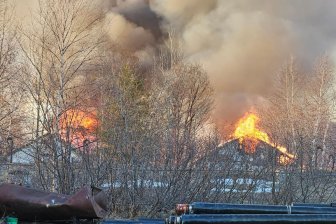The Saskatchewan Health Authority is stepping up measures to help increase support for hospitals as the surge in COVID-19 cases continues and intensive care unit beds become a premium.

With nearly all ICUs in the province close to 100 per cent capacity and just two beds lefts in Saskatoon, SHA announced on Thursday it would be relocating health care staff from slower-moving services within the system to areas of higher need.
This means additional staff will be made available to help out with COVID-19 testing and contact tracing along with the increase in hospitalizations including ICU admissions.

Daily ICU demand in the province is currently at 126 per cent capacity.
“I’ve worked 20 years in the intensive care unit. I’ve worked in Saskatchewan and out of the country,” said Dr. Susan Shaw, Saskatchewan Health Authority’s chief medical officer. “This is a sustained increase in very sick people for the longest period of time I have ever seen and we know it’s going to continue.
“We really need the public to stay home, keep your bubbles and stay as safe as you can by following every single public health measure.”

Additional staff will also help out at long-term care homes to support cohorting and outbreak management.
In case workers are forced to isolate due to being in close contact with a positive case, additional staff will also be made available.
SHA said it believes it has done a good job managing increased hospitalizations and ICU admissions to date, but at the rate people are coming down with the virus, the province admits it has to do more.
Peak projections forecast 412 ICU patients, which would be a 449 per cent more than current available capacity.
“Scaling up on this level is a significant challenge, so we need the public’s help to ensure we do not face the exponential growth in cases going forward that would strain our ability to scale up on the timelines required,” SHA CEO Scott Livingstone said.

“As an example, surging our ICU capacity by 449 per cent means adding more ICU beds than there are in all four of Canada’s Atlantic provinces combined, all on an expedited timeline while operating under the extreme duress of the pandemic, illustrating the scope of our task if we do not get help from the public.”
With just three ICU beds left in the province, SHA said it will need to create 200 more beds for patients outside of Saskatoon and Regina.
SHA said it’s working with the Public Service Commission for additional staff from the province and the Canadian government to add staff from Statistics Canada to its contact tracing capacity.

Questions about COVID-19? Here are some things you need to know:
Symptoms can include fever, cough and difficulty breathing — very similar to a cold or flu. Some people can develop a more severe illness. People most at risk of this include older adults and people with severe chronic medical conditions like heart, lung or kidney disease. If you develop symptoms, contact public health authorities.
To prevent the virus from spreading, experts recommend frequent handwashing and coughing into your sleeve. They also recommend minimizing contact with others, staying home as much as possible and maintaining a distance of two metres from other people if you go out. In situations where you can’t keep a safe distance from others, public health officials recommend the use of a non-medical face mask or covering to prevent spreading the respiratory droplets that can carry the virus. In some provinces and municipalities across the country, masks or face coverings are now mandatory in indoor public spaces.
For full COVID-19 coverage from Global News, click here.
- Naloxone-resistant street drug linked to 9 deaths in Eastern Canada seized in Alberta
- Buzz kill? Gen Z less interested in coffee than older Canadians, survey shows
- ‘She gets to be 10’: Ontario child’s heart donated to girl the same age
- Canada updating sperm donor screening criteria for men who have sex with men





Comments